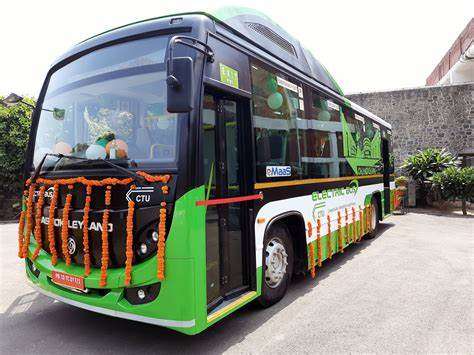India’s ambitious plan to transition to electric mobility through the deployment of 50,000 electric buses across the country is facing mounting delays due to critical component shortages and unresolved financing hurdles.
Launched under the PM-eBus Sewa scheme, and supported by the FAME India Scheme, the initiative is a cornerstone of the government’s drive toward decarbonizing public transport. However, progress has been hampered as manufacturers struggle to meet delivery schedules, and state transport bodies face difficulties in securing viable financial models.
According to officials from the Ministry of Heavy Industries, several electric bus tenders awarded in the past year remain unfulfilled, with production timelines slipping by several months. A senior official stated that while over 10,000 buses have been sanctioned in principle, less than 25% have been delivered due to supply chain bottlenecks.
Industry insiders point to global disruptions in the availability of lithium-ion battery packs, semiconductors, and electronic controllers—all essential components of e-bus manufacturing. India’s dependency on imports, particularly from China and East Asia, has made local production vulnerable to international trade dynamics.
“Even with orders in hand, manufacturers are unable to meet deadlines because components are either delayed or priced unpredictably due to external factors,” said a senior executive from a leading electric bus manufacturer.
While the government has launched the Production Linked Incentive (PLI) scheme to encourage domestic manufacturing of EV parts, experts believe that the local ecosystem is still in its infancy. As a result, India’s reliance on global suppliers is likely to continue in the short term, affecting scalability.
In parallel, financial challenges are compounding delays. Many State Transport Undertakings (STUs) lack the creditworthiness required to attract private investment or take long-term leases for electric buses. High capital costs—estimated at ₹1–1.5 crore per e-bus—along with uncertainty around asset depreciation and battery life, have made lenders cautious.
“The absence of a standardised financing framework and delayed subsidy disbursements under FAME-II are making investors wary,” said Ritu Sharma, a mobility finance consultant. “STUs already operating under losses find it difficult to bear the operational costs of e-buses without assured support.”
The Gross Cost Contract (GCC) model, where private operators are paid per kilometre to run buses, is widely used. However, without guaranteed minimum payments or prompt subsidies, many contracts are considered financially unsustainable.
Despite the setbacks, the central government remains firm on its electrification agenda. Union Minister for Heavy Industries, Dr. Mahendra Nath Pandey, recently called for increased public-private collaboration and innovative financing instruments such as green bonds and blended finance models to address these concerns.
While the vision for a clean, electric public transport system remains intact, its success depends on immediate interventions in policy, manufacturing, and finance. Experts say that without swift action, India risks missing its near-term targets for e-mobility adoption in urban and semi-urban regions.
As the country looks to meet its climate commitments and reduce urban pollution, the efficient rollout of electric buses will be a critical milestone. Whether India can overcome its current obstacles remains to be seen.



